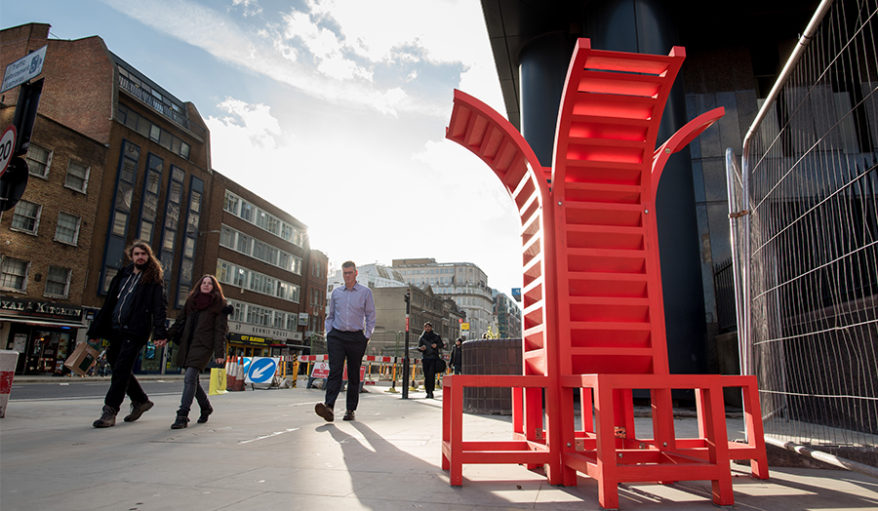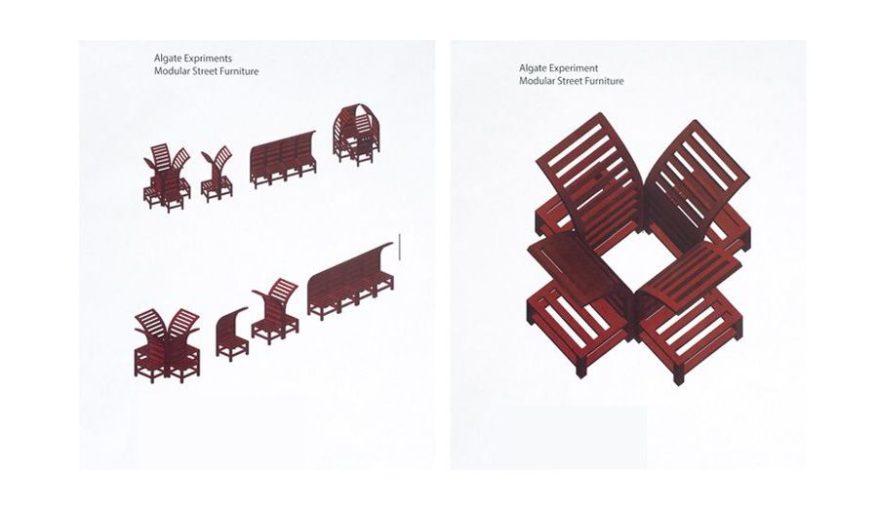London’s Innovative Street Furniture And Its Designers
By Something CuratedOften overlooked, London’s street furniture adds to the city’s overall design, both opening up and refreshing public space with new function and meaning. Here we take a look at some of London’s leading street seats and structures both old and new, some temporary and some permanent, and reflect upon the social and artistic value of these interventions.
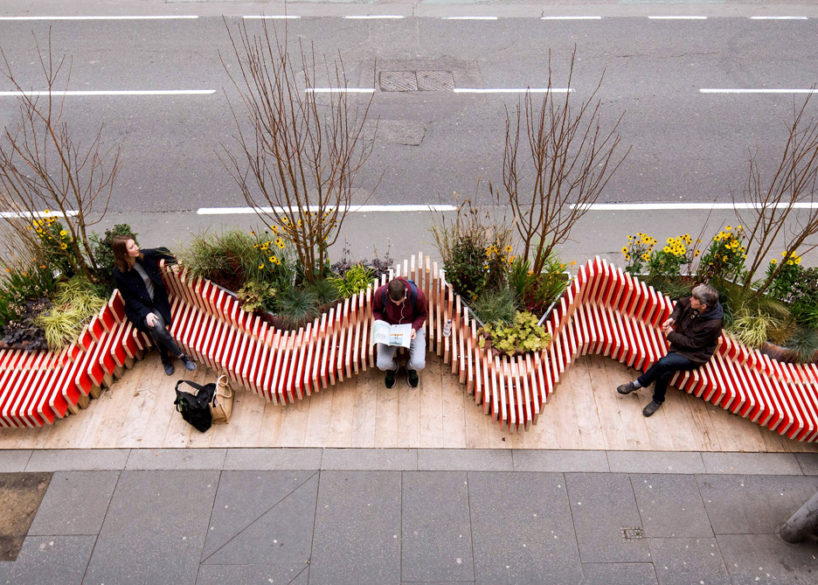
Street furniture is seen as an artistic or aesthetic choice, but it is also as a representation of both new technological developments and changes in the social fabric of a city. It also comes along with ideas of place-making, as many public”furniture”installations both commemorates history and fosters new opportunities for spontaneous meeting, social engagement and “eyes on the street.” Simply put, good street furniture has the power to bring together a community and furthermore, encourage its development. It has the capacity to inspire and delight the public by creating unexpected encounters and challenging the (mostly mundane) ways that we are used to traversing the city sidewalks, our headphones in and eyes glued to our smartphones. Good street furniture will disrupt that routine. It will make you look up and re-engage with the world around you and everyone else in it.
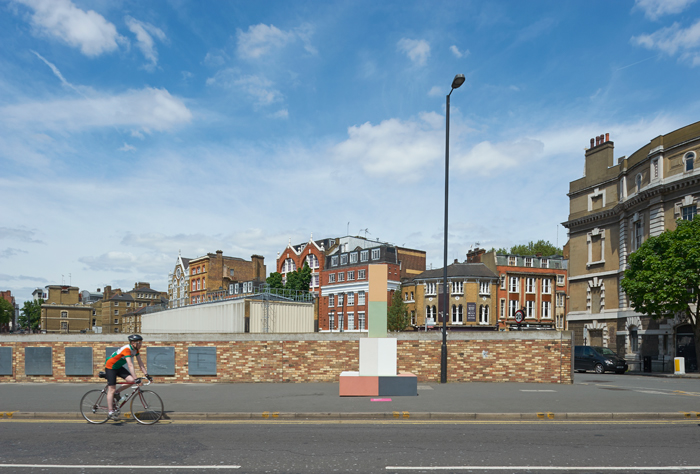
GRUPPE – Clerkenwell Design Festival 2015
While some street furniture may come and go as temporary installation projects, there are the iconic mainstays that have defined British urban culture for over fifty years. Installations and staple fixtures have served as representations of the evolution in design and technology. Last May, as part of the 2015 Clerkenwell Design Festival, the Swiss design team GRUPPE installed a collection of street furniture around Clerkenwell entitled Vita Contempletiva (the title borrows from Hannah Arendt’s idea of the Vita Contempetiva, or the necessary portion of our days we should spend at rest, in order to better connect with the world.) The pastel coloured arches and practical seating comprise two basic Roman architectural elements, columns and forums. Some of GRUPPE’s work around Clerkenwell was simply artistic embellishments while other pieces of furniture provided a resting spot on the urban streets. The pastel hues of Vita Contempletiva mimic the shades of the sidewalk and foliage, as street furniture it stands out in its material yet blends into the background.
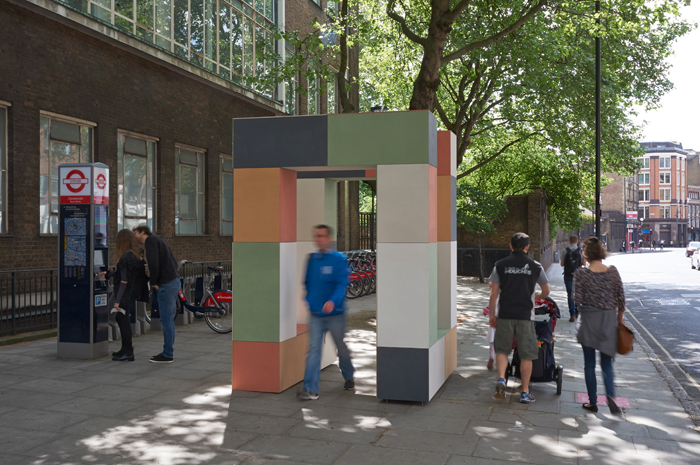
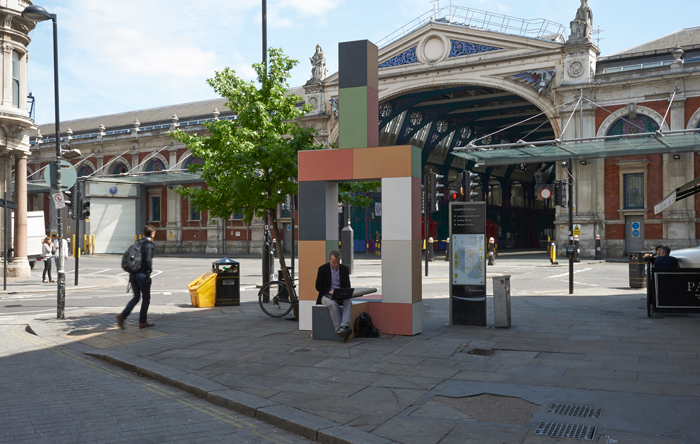
Design Studio WMB – Modular Parks
Design studio WMB has designed a miniature modular park that monitors air quality and offers plant-covered seatings for street goers. It is a year-long installation that started in late 2015 that is part of Team London Bridge’s Fresh Air initiative, aiming to improve London’s environment. The design studio is based in London and Liverpool and have presented the city with a mobile micro-green space that will hopefully raise awareness of pollution in London. It is installed on Tooley Street, near London Bridge, and features a zig-zagging bench made up of untreated wood to allow for natural weathering. This unique item of street furniture functions as a simple seating element while simultaneously exerting a greater ecological message which aims to encourage chance interactions through its zig-zag design.
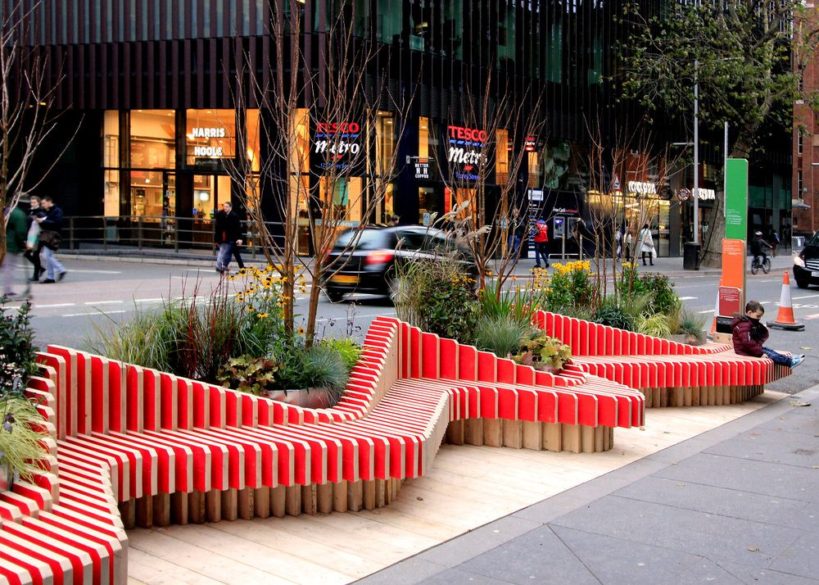
David Mellor – Behind London’s Most Permanent and Iconic Structures
While some eye-catching London street furniture may come and go, there are those designers that have gifted the city with imperative pieces that continue to serve as city landmarks. David Mellor is a prime example of a street furniture contributor having designed bus stops, crossing signals, and stop lights in the 60’s and 70’s that are still in use today.
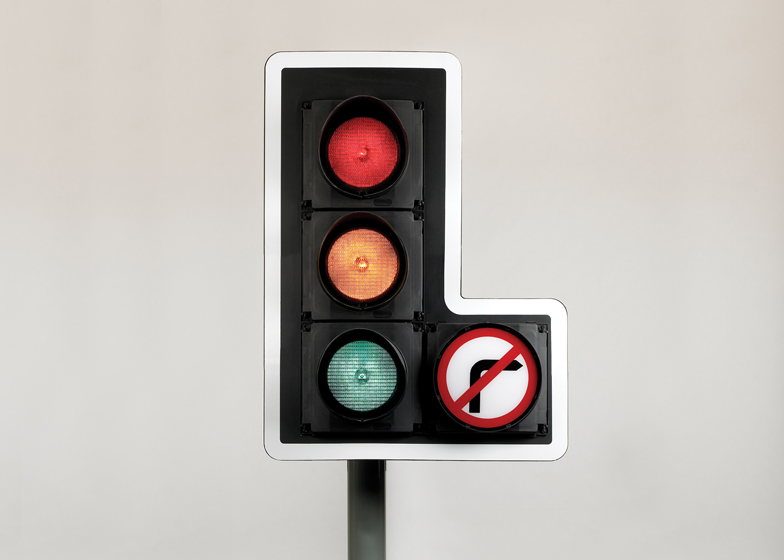
Mellor is responsible for introducing the Abacus street lamp and waste bin, using galvanized steel in replacement of the classic Victorian cast iron. The revolutionary designer played a key role in creating street-ware that was practical for both the motorist and the pedestrian. The street signs, signalling when to cross for both drivers and those on foot were aesthetic contributions from Mellor in the early 60’s, the common street staple we still encounter today speak for vast design impact Mellor has had on London roads.
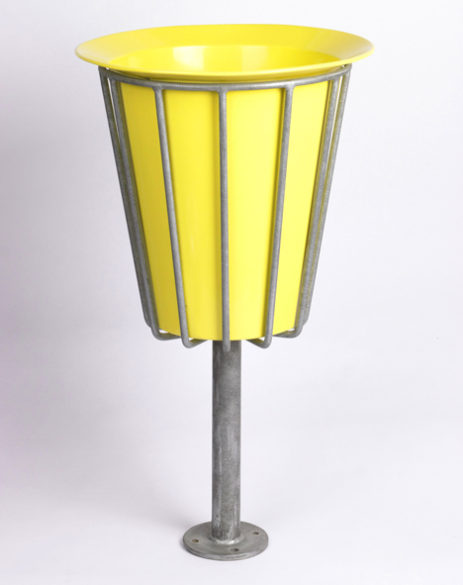
Street Furniture by Students
The respect for street furniture has led to university competitions that continue to bring together the furniture and urban everyday life. Most recently, CASS Furniture and Architecture student Charles Mugisha won his university competition with the design of a sculpture that doubles as public seating titled The Lotus Chair. Located on Aldgate Street, the bright red hued public work embodies the continued revere of street furniture and its relevance in urban culture as well as the design community.
